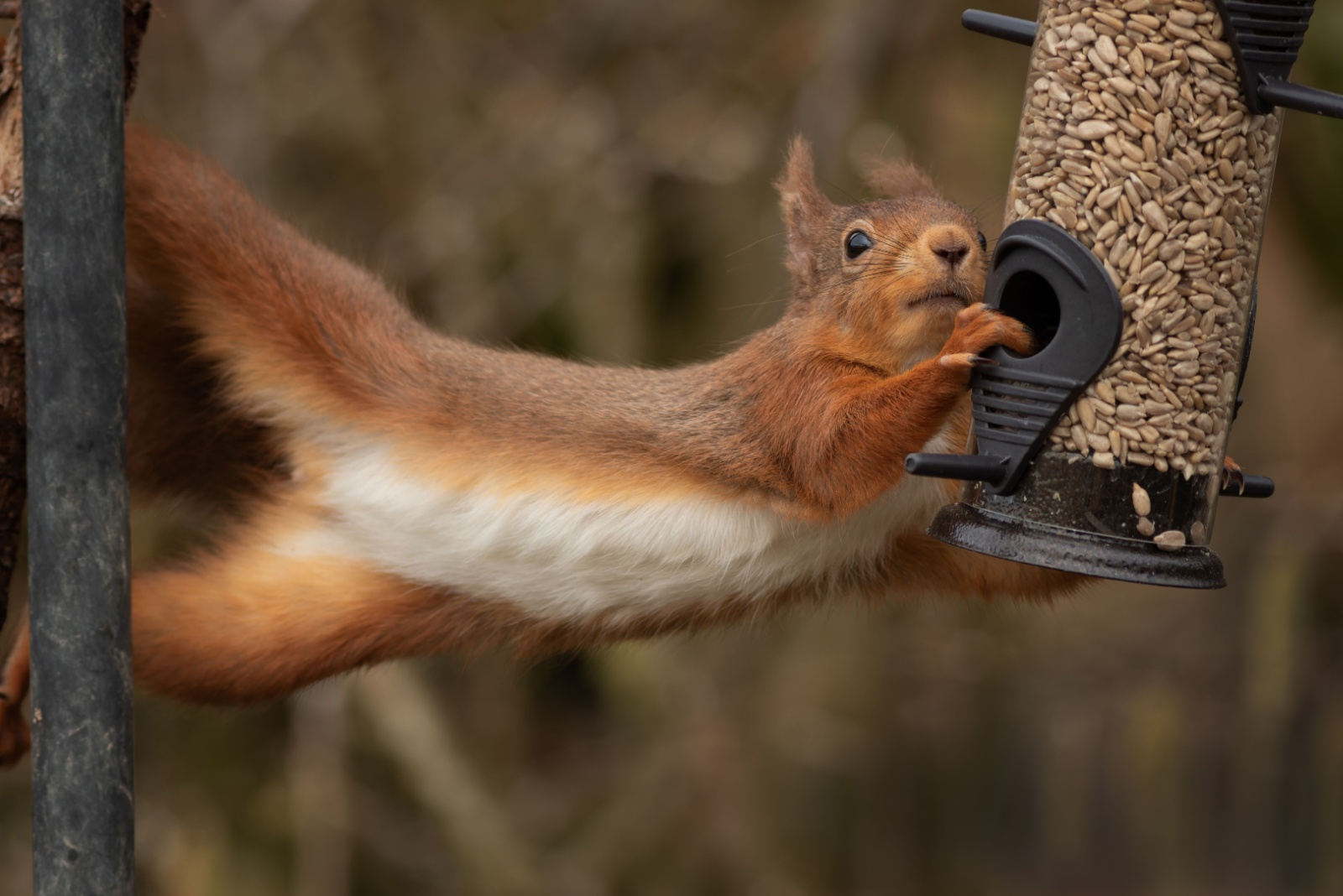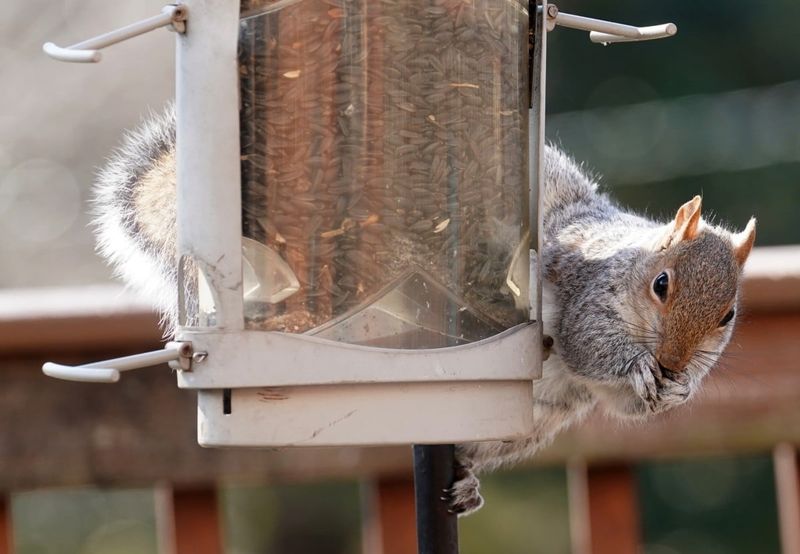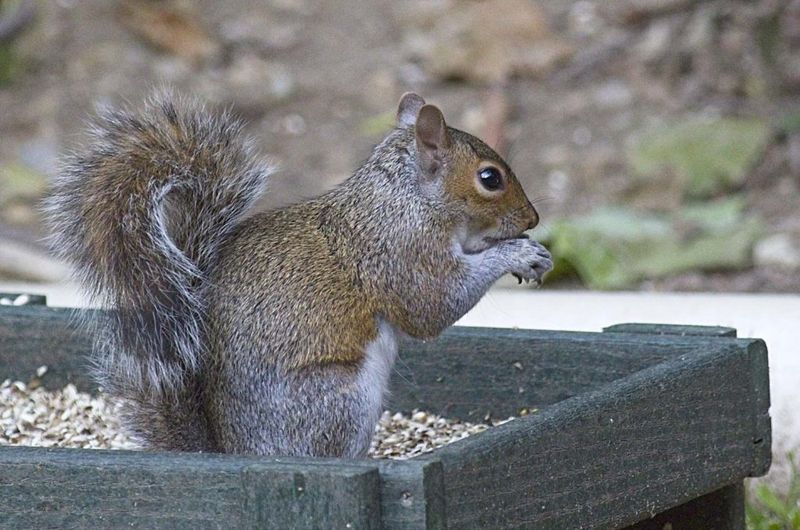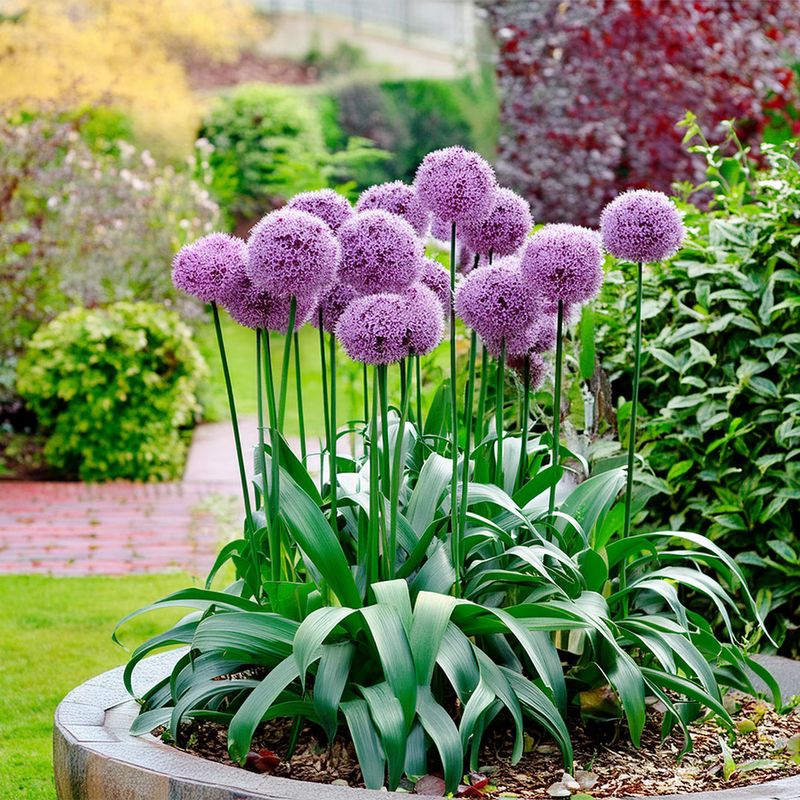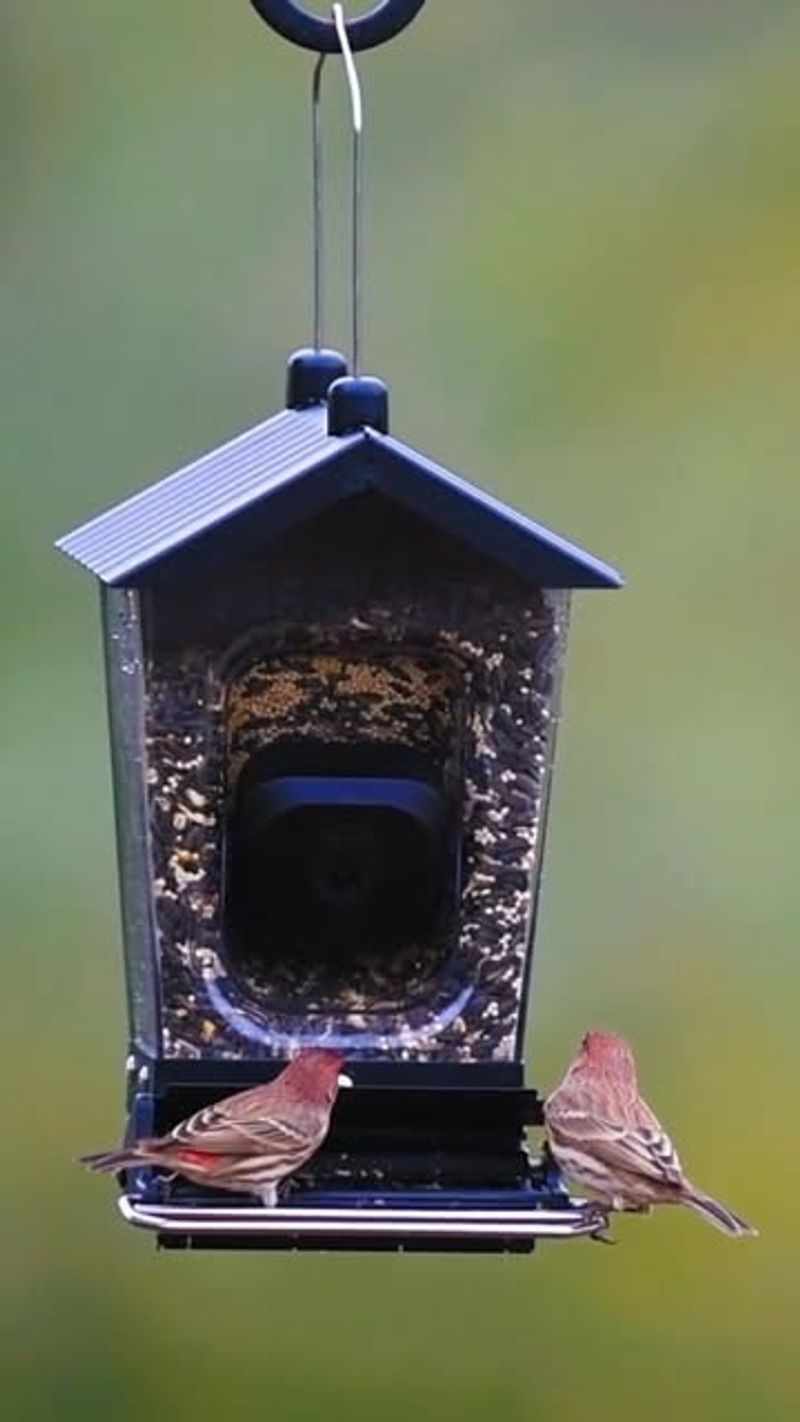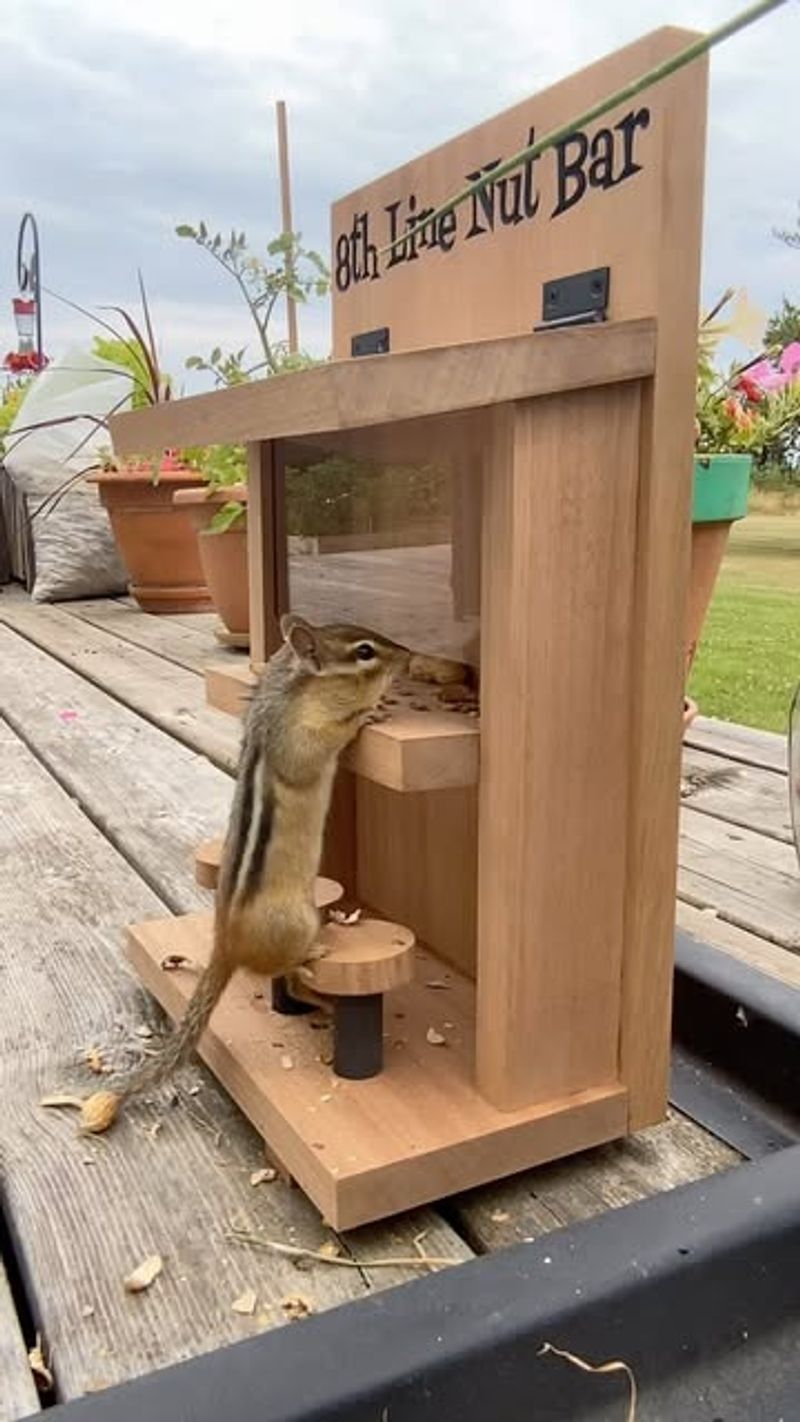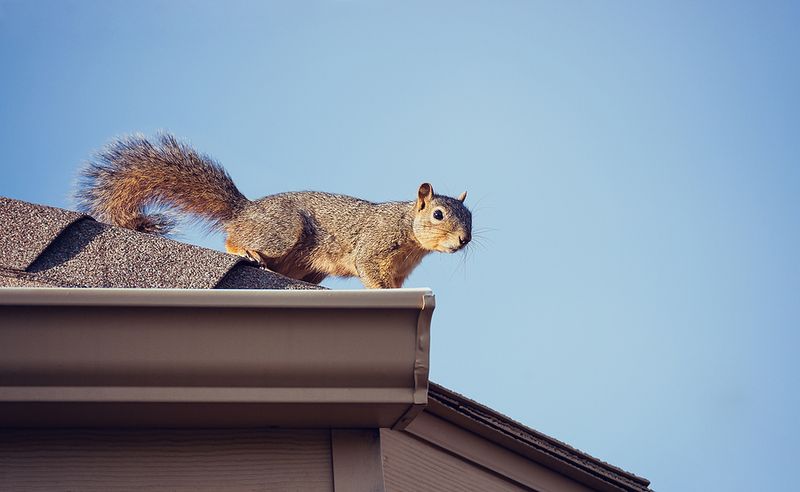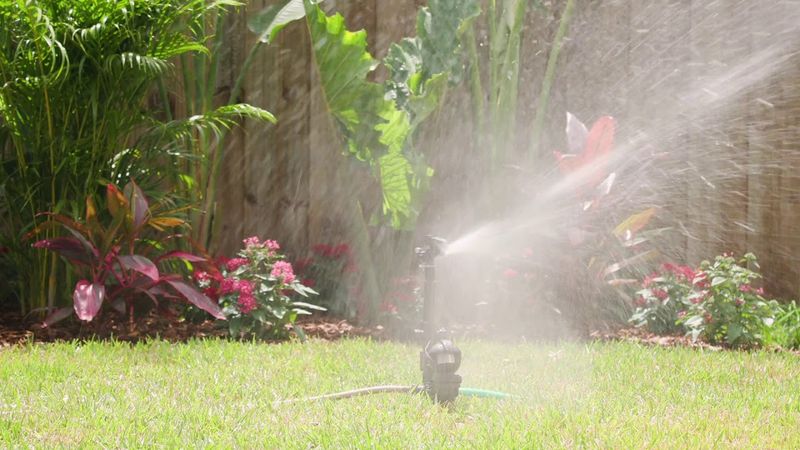Bird watching is a favorite pastime for many Ohioans, but squirrels can turn feeders into their personal buffet. It’s frustrating to see your feathered guests miss out. Luckily, there are kind ways to keep the seed safe.
As wildlife lovers in the Buckeye State, we want to protect our backyard sanctuaries without harming curious critters. Squirrels are clever, but with a few smart tricks, you can stay one step ahead. Think design tweaks and strategic placement.
These humane solutions help you outsmart squirrels while keeping your bird haven thriving. From baffles to spicy seed blends, each tip works with Ohio’s rich ecosystem—not against it.
1. Baffle Their Attempts With Dome Shields
A dome-shaped baffle acts like an umbrella over your feeder, causing squirrels to slide right off. Many Ohio birders swear by these simple devices for their effectiveness against even the most determined bushy-tailed acrobats.
Installing one takes just minutes, but delivers lasting results. Position the dome at least 4-5 feet above ground level for maximum effectiveness, as squirrels can jump surprisingly high.
During winter months when food becomes scarce in Ohio’s forests, these baffles become especially important as squirrels grow more persistent in their quest for easy meals.
2. Spicy Solutions That Birds Don’t Mind
Mixing cayenne pepper into your bird seed creates a natural deterrent that mammals hate but birds can’t taste. The capsaicin affects squirrels’ sensitive taste buds while birds munch away happily, unaffected by the spice.
Start with a small amount—about a tablespoon per pound of seed—and adjust as needed. This method works year-round in Ohio’s changing seasons and won’t harm either species.
For extra effectiveness, sprinkle some around the base of your feeder pole too. Squirrels will quickly learn to associate your feeding station with that unpleasant burning sensation and seek easier meals elsewhere.
3. Strategic Planting With Daffodils And Alliums
Creating a natural barrier around feeding stations using bulbs squirrels detest provides beautiful landscaping with practical benefits. The strong scent and taste of daffodils and ornamental alliums naturally repel these furry raiders.
Fall is ideal for planting these bulbs in Ohio gardens. Circle your feeder area with several rings of these flowers, which will emerge in spring just as squirrel activity increases after winter.
Beyond deterring squirrels, these plantings attract butterflies and beneficial insects, creating a more diverse backyard ecosystem. Many Ohio gardeners report significantly reduced squirrel problems after establishing these natural barriers.
4. Pole-Mounted Feeders With Proper Clearance
Mounting feeders on smooth metal poles at least 10 feet from jumping points like trees or structures dramatically reduces squirrel access. The slippery surface gives them nothing to grip, especially when coated with a non-toxic lubricant.
Metal shepherd’s hooks work well for smaller feeders in Ohio yards. Ensure the pole stands at least 5-6 feet tall with feeders hanging from the center rather than the edges.
Remember that Ohio squirrels can jump horizontally up to 10 feet, so measure carefully when positioning your feeding station. A properly placed pole-mounted system often eliminates 90% of squirrel problems without any additional measures.
5. Weight-Activated Feeder Ports Close The Buffet
Modern feeders with spring-loaded perches shut access ports when anything heavier than a bird lands on them. The technology has improved dramatically, with models now calibrated to allow even larger birds like cardinals—common in Ohio—while still blocking squirrels.
Many Ohio bird enthusiasts report these feeders pay for themselves quickly through saved seed. The mechanism works based on simple physics rather than batteries or complicated parts.
During winter feeding season when birds need extra support in Ohio’s cold climate, these specialized feeders ensure your seed reaches its intended recipients. Squirrels quickly learn to look elsewhere after a few failed attempts.
6. Dedicated Squirrel Feeding Stations As Diversion Tactics
Setting up a separate feeding area specifically for squirrels often redirects their attention away from bird feeders. Position this station at the opposite side of your Ohio yard, stocked with corn, nuts, or special squirrel food blends.
Many backyard wildlife watchers in Ohio find this compromise solution creates peaceful coexistence. The squirrels quickly learn where their designated buffet is located and often prefer the easier meal.
This approach acknowledges that squirrels are natural parts of Ohio’s ecosystem while still protecting bird feeding areas. It also provides entertainment as these clever creatures perform acrobatics at their own dining spot!
7. Cage-Style Feeders Allow Only Feathered Friends
Surrounding traditional tube feeders with wire mesh creates a physical barrier that allows small birds to enter while excluding larger visitors. The openings should measure approximately 1.5 inches—perfect for chickadees and finches common throughout Ohio.
Look for models with chew-proof metal components rather than plastic parts. Ohio’s gray and fox squirrels have powerful teeth and can quickly destroy weaker materials when motivated by hunger.
For added protection during Ohio’s productive growing seasons when natural food is abundant, position these caged feeders near native flowering plants. The combination attracts more birds while further discouraging squirrels who prefer easier foraging opportunities.
8. Slippery Poles Foil Furry Climbers
Metal poles become impassable obstacles when coated with non-toxic, food-grade silicone or petroleum jelly. Apply a generous layer to feeder poles, creating a slick surface those nimble paws can’t grip. Most squirrels will slide right back down after a few frustrated attempts.
For Ohio’s humid summers, reapply these slippery substances every few weeks. The weather conditions here can wash away or break down these barriers faster than in drier climates. Remember that rain is particularly effective at removing these coatings.
Many Ohioans report success with specialized pole baffles combined with these slippery solutions for maximum effectiveness. The combination approach works especially well during fall when squirrels become more determined as they prepare for winter.
9. Motion-Activated Sprinklers Surprise Without Harm
Who knew a quick splash could be so effective? Motion-activated sprinklers detect movement and release a harmless burst of water that startles squirrels away. The unexpected spray teaches them to avoid your feeding area without causing any injury to these persistent critters.
For Ohio’s varying seasons, these devices can be adjusted for sensitivity. During spring migration when more birds visit, you might want to reduce the sensitivity to avoid scaring away feathered visitors. These systems typically use minimal water, making them environmentally friendly even during our occasional summer dry spells.
Position sprinklers strategically to cover approach routes squirrels typically use, like nearby tree branches or fence tops. Most Ohio squirrels learn the boundaries within just a few days of installation.

